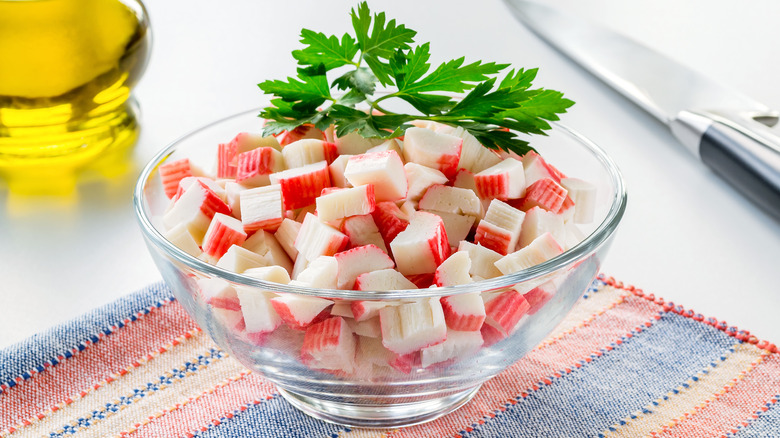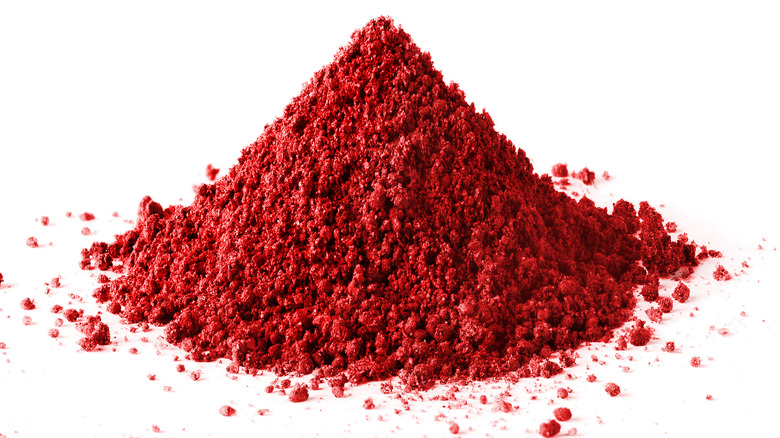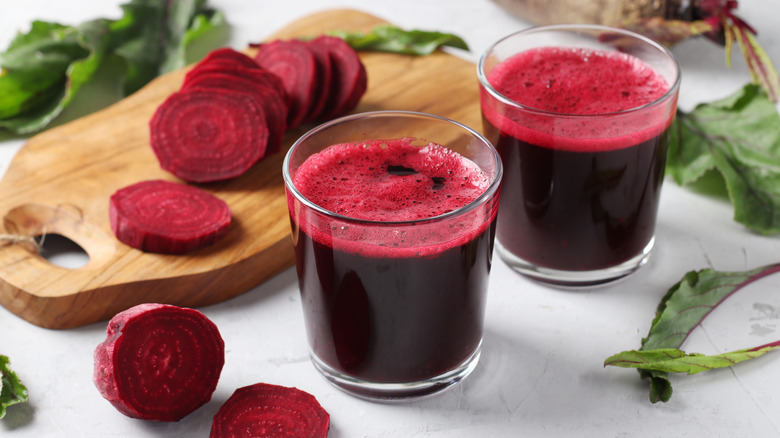How Imitation Crab Gets Its Pink Color
If you've ever bought sushi from the grocery store, you might have noticed that one of the ingredients is often imitation crab. The product was created in Japan in the '70s to stand in for more expensive fresh crab and is now a global staple. If you didn't know that most pre-packaged sushi — particularly California rolls — contains imitation crab, there's no need to freak out: It is real fish, just not crab. It's made from surimi, which is a paste of starch, protein, flavorings, and white fish such as Alaskan Pollock.
It's not just the taste that makes imitation crab pass for crab. You may have noticed that it has a reddish-pink color, just like the real meat. This comes from food dye that's applied to the sticks of solidified imitation crab paste. The contents of the dye vary among different manufacturers. Some use an insect-based coloring called carmine, while other sources can be spices like paprika or fruits like tomatoes.
If imitation crab is colored with natural ingredients like spices and bug extracts, does that mean it's just as healthy as real crab for humans and the planet? That depends on the rest of the recipe, per Healthline. While some brands may use sustainably sourced seafood and non-GMO additives, imitation crab is generally very processed and has less protein and fewer nutrients than real crab. Further, it's not always easy to verify which types of fish are used in surimi.
The details behind imitation crab's colorants
What else is there to know about the imitation crab dye called carmine, or natural red 4? According to Live Science, a single pound of this dye is made from pulverizing 70,000 cochineal insects. Tasty, right? What's more, carmine has a pretty solid track record as compared to other, notoriously harmful food colorants, namely red dye 40. After all, natural carmine has been used for centuries, starting with the Maya, and continues to provide farming jobs in South America.
Another imitation crab colorant, lycopene, is commonly extracted from tomatoes, though it can also come from certain fruits, algae, and fungi. Just as chlorophyll gives plants their green color, lycopene is responsible for plants' reddish colors. However, it's worth noting that lycopene isn't always ideal for imitation crab and other colored foods, as it tends to take on an orange hue.
Beet juice, considered both halal and kosher, is also a popular option for coloring imitation crab. It has little to no flavor, which is typically preferred for coloring applications. That being said, like lycopene, beet juice extract is prone to changing color (from deep purple-red to brown) when exposed to alkaline substances.
Our last common imitation crab colorant, paprika, is used primarily as a seasoning, but it also gives countless food items their signature reddish-orange color. Paprika can even be used alongside carmine to produce more vibrant reds.
Are these colorants dangerous in any way?
Although food colorants like carmine have very few reported cases of allergic reactions, this doesn't make them completely free of controversy. According to the London Allergy and Immunology Centre, people who react negatively to carmine sometimes have severe symptoms, from asthma attacks to anaphylaxis. While some fear that dogs can develop respiratory conditions — such as asthma — after coming into contact with the colorant, the European Food Safety Authority found that dogs and cats can consume it safely when it's added to their feed in reasonable quantities.
When it comes to lycopene, Verywell Health advises against consuming large amounts of the colorant while pregnant or breastfeeding. This particular colorant can also slow your body's ability to form blood clots, which can prove risky for those taking blood thinners or undergoing surgery.
As for beet juice and paprika, some consumers are bound to have allergic reactions, but the majority of people should be fine as long as they consume these colorants in moderation. Considering how these additives are only painted onto the outside of imitation crab, it really shouldn't be an issue unless you are allergic. So, now you know, and you can eat imitation crab cakes to your heart's content.


